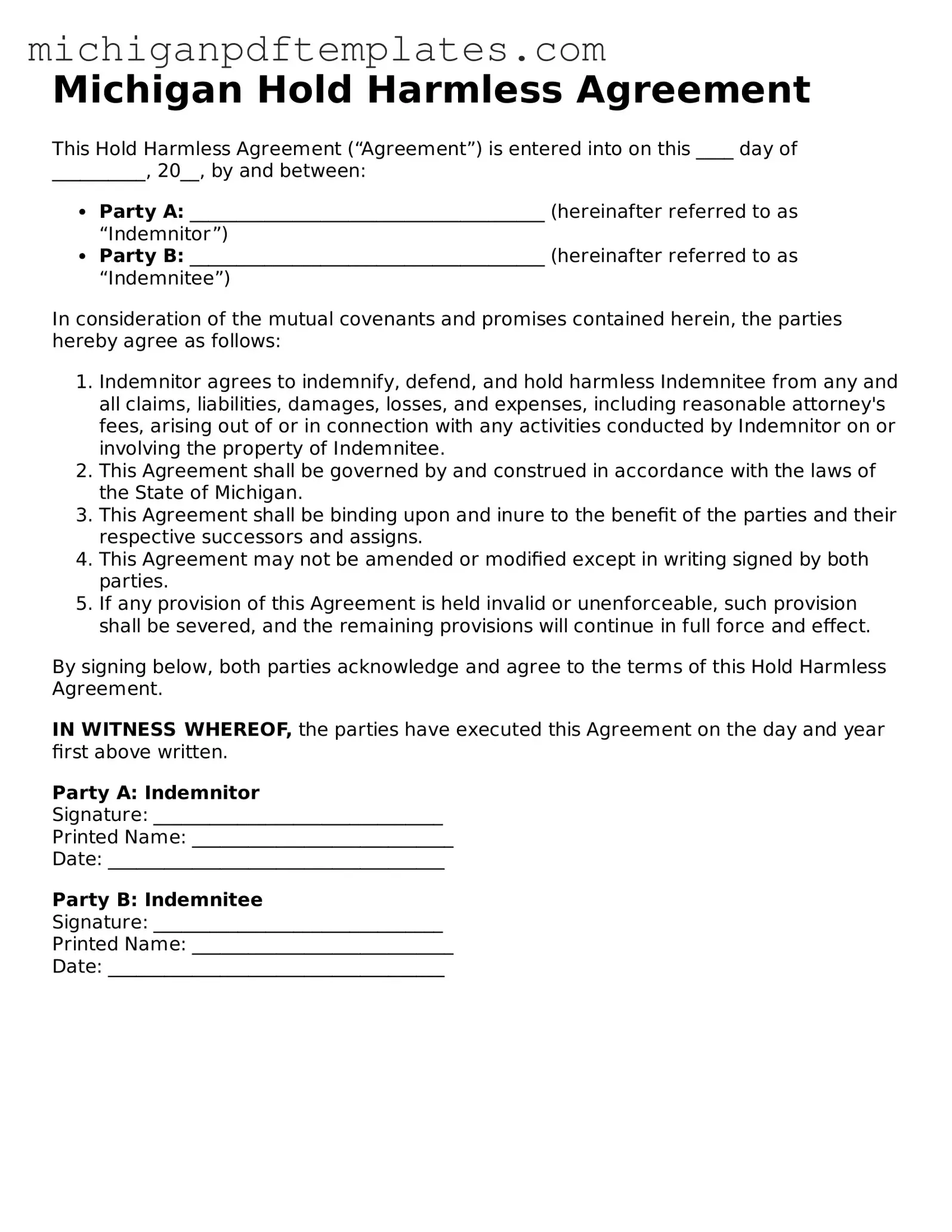The Michigan Hold Harmless Agreement form is an important legal document that serves to protect individuals and organizations from liability in various situations. This agreement typically outlines the responsibilities of the parties involved and specifies that one party will not hold the other responsible for certain risks or damages that may arise during a specific activity or event. It is commonly used in contexts such as property rentals, events, and activities where there is a potential for injury or damage. By signing this form, participants acknowledge the risks involved and agree to waive their right to seek compensation from the other party in the event of an incident. This agreement not only clarifies the expectations of each party but also fosters a sense of trust and understanding, making it an essential tool for many transactions and agreements in Michigan. Understanding the nuances of this form can help individuals and businesses navigate potential legal challenges and ensure that they are adequately protected while engaging in various activities.
